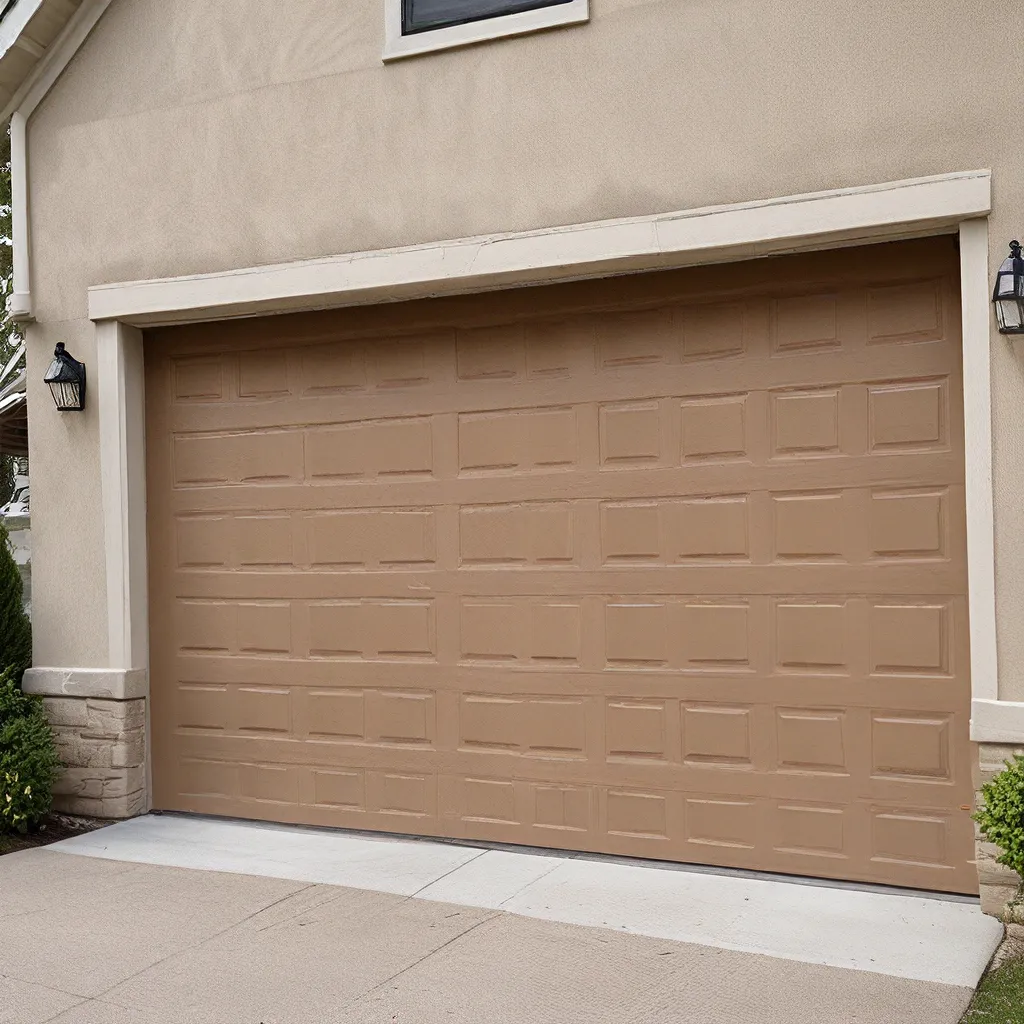
In the world of home improvement and property maintenance, the humble garage door often goes overlooked. However, garage doors play a vital role in maintaining the energy efficiency and security of your property. One common issue that can arise is the presence of air leaks around the door, which can significantly impact your energy bills and overall comfort.
Identifying and Diagnosing Garage Door Air Leaks
The first step in addressing air leaks is to identify where they are occurring. Visual inspection is often the best place to start. Look for any gaps or cracks around the edges of the door, as well as the areas where the door meets the floor and the header. Pay close attention to weatherstripping, as deterioration or improper installation can be a common culprit.
Another useful technique is to perform a draft test. On a windy day, carefully run your hand around the perimeter of the closed door, feeling for any areas where air is flowing through. You can also use a draft detector or smoke pencil to identify the exact locations of the leaks.
Addressing Garage Door Air Leaks
Once you’ve identified the problem areas, it’s time to take action. Depending on the severity of the air leaks, there are several strategies you can employ to improve the energy efficiency of your garage door:
Weatherstripping Replacement
One of the most common solutions is to replace worn or damaged weatherstripping. This flexible material, typically made of rubber or vinyl, creates a seal between the door and the frame, preventing air infiltration. Be sure to measure the existing weatherstripping and purchase a replacement that is a perfect fit for your door.
Door Adjustment
In some cases, the issue may be related to the alignment or adjustment of the door itself. Over time, the hinges, rollers, and other hardware can become worn or misaligned, causing the door to fit poorly in the frame. A professional door technician can assess the issue and make the necessary adjustments to ensure a tight seal.
Air Sealing
For larger or more stubborn air leaks, you may need to consider air sealing the door. This can involve applying weatherstripping in additional areas, using caulk to fill gaps, or installing foam inserts around the perimeter. Be sure to use high-quality, durable materials designed for exterior use.
Insulation Upgrade
If your garage door is not already insulated, consider upgrading to an insulated model. Insulated garage doors can significantly improve the thermal efficiency of your home, reducing energy costs and improving overall comfort. Look for doors with high R-values, which measure the effectiveness of the insulation.
The Benefits of Addressing Garage Door Air Leaks
By addressing air leaks around your garage door, you can enjoy a variety of benefits:
- Energy Savings: Reducing air infiltration can lead to lower heating and cooling costs, as your HVAC system won’t have to work as hard to maintain the desired temperature.
- Improved Comfort: Eliminating drafts and air leaks can create a more comfortable living environment, especially in the areas of your home adjacent to the garage.
- Extended Door Lifespan: Proper sealing and maintenance can help prolong the life of your garage door, reducing the need for costly repairs or replacement.
- Enhanced Security: A well-sealed door creates a stronger barrier against unwanted intruders, improving the overall security of your property.
Integrating Smart Home Technologies for Optimal Door Performance
In today’s increasingly connected world, homeowners have access to a wealth of smart home technologies that can further enhance the performance and efficiency of their garage doors. These innovative solutions can provide a range of benefits, from remote monitoring and control to advanced diagnostics and predictive maintenance.
Remote Access and Control
Smart garage door openers allow you to control your door from anywhere, using a smartphone app or voice commands. This can be particularly useful for securing your home when you’re away, as well as for managing access for family members or service providers.
Automated Scheduling and Monitoring
Some smart garage door systems offer automated scheduling features, allowing you to program the door to open and close at specific times. This can help ensure that the door is properly closed, even if you forget. Additionally, many systems provide real-time monitoring of door status, alerting you to any issues or potential problems.
Predictive Maintenance
Cutting-edge smart home technologies can even help predict when your garage door may require maintenance or repairs. By analyzing usage patterns and monitoring component wear, these systems can provide proactive recommendations, helping you stay ahead of potential problems and maximize the lifespan of your door.
Partnering with Professionals for Optimal Door Performance
While many homeowners may be tempted to tackle garage door repairs and maintenance on their own, it’s often best to partner with a professional door service provider. These experts have the knowledge, tools, and experience necessary to accurately diagnose and resolve even the most complex door-related issues.
MW Door Service, for example, is a leading provider of garage door repair and installation services, serving homeowners and businesses throughout the local area. Their team of certified technicians can help identify and address air leaks, optimize door performance, and integrate smart home technologies for maximum efficiency and convenience.
Conclusion
Maintaining the integrity and efficiency of your garage door is crucial for the overall energy performance and security of your property. By diagnosing and resolving air leaks, upgrading to insulated or smart door models, and partnering with professional door service providers, you can enjoy a range of benefits, from lower energy costs to enhanced home comfort and protection.
Remember, a well-maintained garage door is not just a functional necessity – it’s an investment in the long-term value and sustainability of your property. Take the time to address any air leaks or performance issues, and you’ll be rewarded with a more energy-efficient, secure, and comfortable living or working environment.


